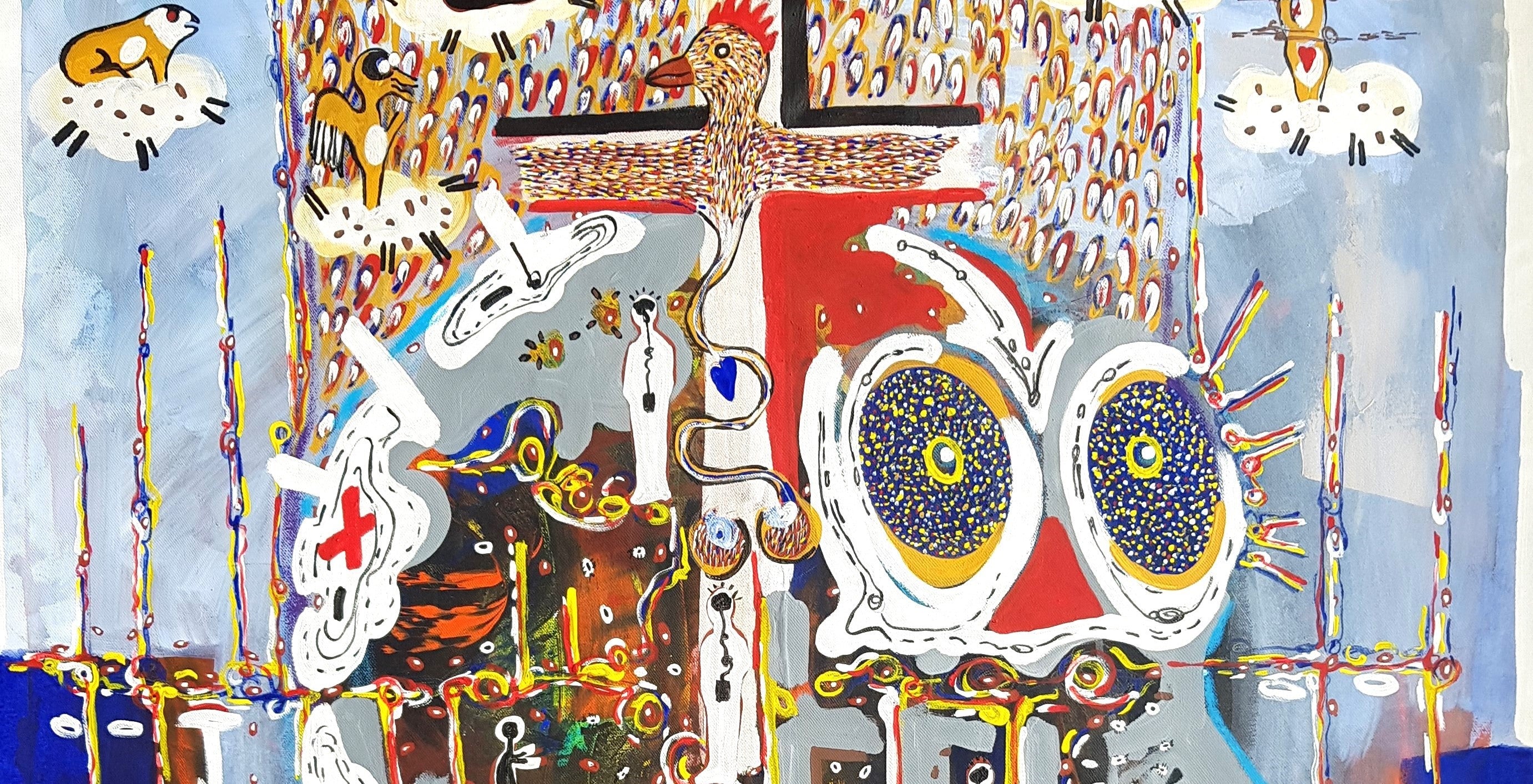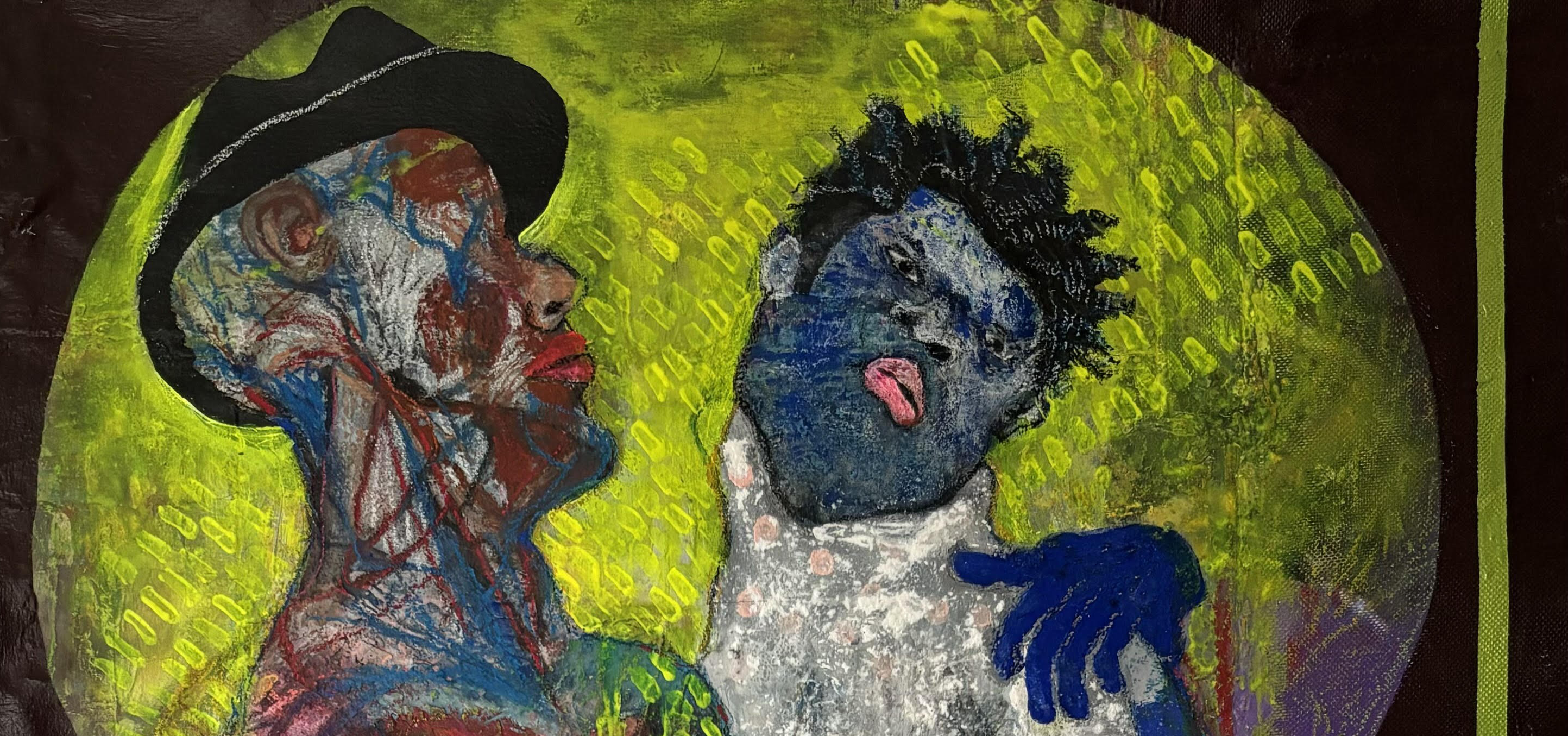
Artist in Focus: Pierre SEGOH
Born on December 21, 1980, in Lomé, Togo, Pierre Akoété SEGOH has carved out a path of resilience, artistry, and introspection. Raised in a loving family, his life took a sudden and challenging turn in 1997 when he lost his father at the age of 17. Forced to abandon his studies, Pierre faced the realities of daily life, driven by the need to support his mother and siblings. It was in these difficult times that he turned to art as both a means of survival and a form of personal expression. Completely self-taught, Pierre's art became a way for him to rebuild his future, turning the pain of loss into a journey of creative discovery and self-affirmation.
Pierre Segoh’s artistic practice has evolved significantly since he first began drawing. Initially approaching the medium as a natural and intuitive activity, he found mentorship in a local painter in the late 1990s. This meeting inspired him to transition from drawing to painting, a shift that would define the trajectory of his artistic career. His work is rooted in deep introspection, with a focus on understanding human nature through the lens of his own emotions, passions, and inner struggles. In his own words, Segoh becomes both the subject and object of his art, conducting an “autopsy” of his feelings to express them in a contemporary pictorial language.
Style and Technique
When asked to describe the evolution of his artistic technique, Segoh emphasizes the intimate relationship between his drawings and his emotions. “For me, drawing is like a vein,” he explains. “It reflects the intimacy of the artist, the essence of who we are.” His drawings serve as a mirror into his inner self, with each stroke of the pencil or brush acting as a reflection of his personal journey.
His transition from drawing to painting was not just a technical shift but a profound change in the way he saw and represented himself. Working with mediums like acrylic, watercolor, and pastel, Segoh's paintings become a mirror, not only for himself but for the viewer. “When I paint, it’s as though I’m looking at myself in a mirror, trying to create something beautiful from what I see inside,” he shares. This desire to turn his introspection into something aesthetically pleasing drives much of his work.
The Duality of Art and Humanity
A central theme in Segoh’s work is the exploration of human complexity. He views the human condition as inherently dualistic, marked by the constant tension between good and evil, beauty and imperfection. “Human beings are never entirely good or entirely bad,” he muses. “This duality is at the core of life, and I seek to capture that in my art.”
Symbolism plays a crucial role in Segoh's visual language. He draws from African ritual symbols and animal representations to convey deeper meanings, yet he also adapts these symbols to speak to global, universal themes. “I don’t limit myself to purely African symbols. I explore what unites humanity as a whole,” he says. This fusion of the local and the universal allows Segoh’s work to resonate with diverse audiences, transcending cultural boundaries while remaining rooted in his heritage.
Philosophical and Moral Influences
Segoh's artistic vision is deeply influenced by philosophical and moral thinkers such as Saint Augustine, Aristotle, and Martin Luther King. Although he never met these figures, their ideas have left a lasting imprint on his creative process. “Their thoughts helped me understand the importance of moral behavior for the good of humanity,” Segoh explains. What resonates most with him is their emphasis on the human condition, not through the lens of religion but through ethical action and moral responsibility.
This intellectual framework informs his approach to art, which he describes as more analytical than denunciatory. “Many artists today claim to be 'engaged,' but I question what that really means. For me, art is not about making a political statement. It's about understanding, analyzing, and reflecting,” he asserts. Rather than condemning or preaching, Segoh seeks to provoke thought and self-reflection, encouraging his viewers to explore the complexities of human existence.
The Role of Art in Personal Transformation
Segoh views his artistic journey as an ongoing process of transformation, particularly in relation to his “inner demons.” These demons, which he defines as his desires, pleasures, and pains, are not something he seeks to eliminate but rather to control and harness in his work. “I don’t try to kill my demons; I try to control them, to turn them into something positive, something constructive,” he explains. This internal battle against his personal flaws becomes a central theme in his art, reflecting a broader struggle to understand and master the self.
As for his legacy, Segoh remains humble and open to the possibility that his work may inspire future generations. “Perhaps one day someone will continue my work and clarify the things I couldn’t,” he reflects. In his view, art is universal, transcending the artist’s own life and continuing to evolve through the people it touches.
Through his symbolic and introspective work, Segoh continues to push the boundaries of contemporary art, inviting us all to join him on a journey of self-discovery. What do you think of his unique approach to art and human nature? We’d love to hear your thoughts—join the conversation and share your reflections on Instagram and Facebook. Don’t forget to tag us!







